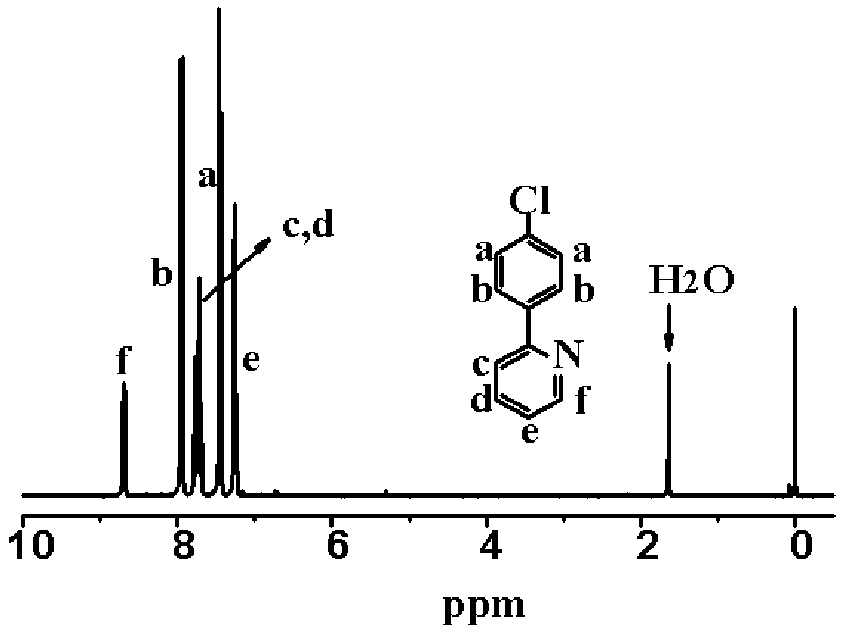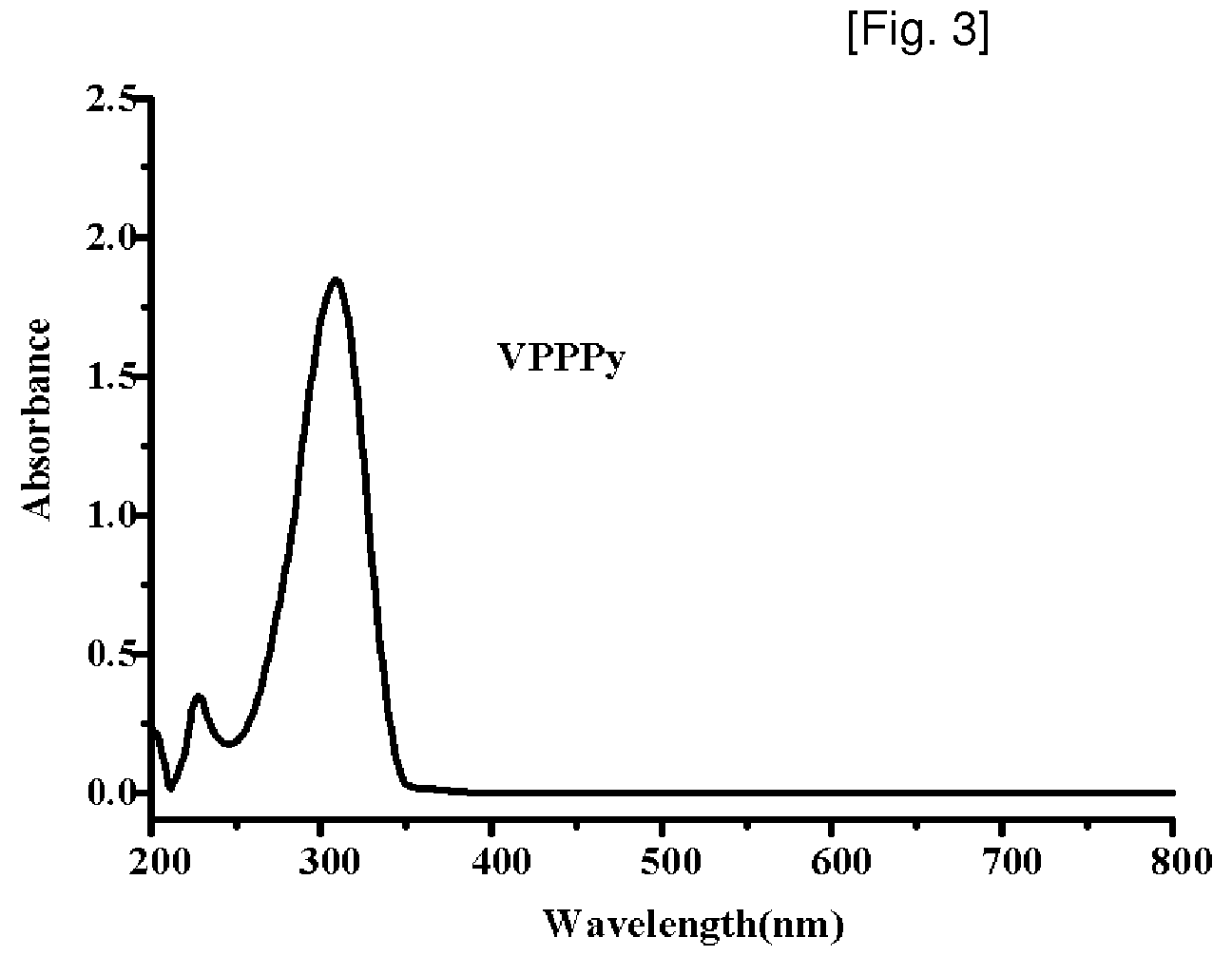Synthesis of Vinylphenylpyridine and Living Anionic Polymerization
a technology of vinylphenylpyridine and anionic polymerization, which is applied in the field of vinylbiphenylpyridine monomer and a polymer thereof, can solve the problems of difficult to completely remove impurities existing in the monomer, difficult to achieve the removal of impurities, and difficulty in reducing the activation of initiators
- Summary
- Abstract
- Description
- Claims
- Application Information
AI Technical Summary
Benefits of technology
Problems solved by technology
Method used
Image
Examples
example 1
Preparation of 2-(4-chloro-phenyl)pyridine
[0042]Under a nitrogen stream, 5.0 g (0.032 mol) of 4-chloro-phenyl boronic acid, 10.0 g (0.064 mol) of 2-bromopyridine, 150□ of tetrahydrofuran and 2M potassium carbonate solution (20□) were placed into a 2-neck round flask 250□ and then 0.37 g (3 mol %) of palladium tetrakistriphenylphosphine [(pd(PPh3)4] was added as a catalyst. After the resulting solution was heated to reflux at 80° C. for 24 hours, the reaction was terminated. The resulting mixture was poured into a beaker containing 200□ of distilled water. After extraction with ether (150□) three times, 10 g of magnesium sulfate was added. The resulting solution was stirred by a rotary stirrer for 30 minutes and then the extraction mixture was filtered. After removing the solvent using a rotary evaporator, the residue was subjected to column chromatography using dichloromethane as a developing solvent and then distilled under reduced pressure to give the 2-(4-chloro-phenyl)pyridine. ...
example 2
Preparation of 3-(4-chloro-phenyl)pyridine
[0044]This Example was carried out in the same manner as Example 1, except that 5.0 g (0.032 mol) of 4-chloro-phenyl boronic acid, 10.0 g (0.064 mol) of 3-bromopyridine, 150□ of tetrahydrofuran and 2M potassium carbonate solution (20□) were added and then 0.37 g (3 mol %) of palladium tetrakistriphenylphosphine [(pd(PPh3)4] was used as a catalyst. Finally, after the resulting solution was heated to reflux at 80° C. for 24 hours, the 3-(4-chloro-phenyl)pyridine was isolated. The yield was 50%.
example 3
Preparation of 4-(4-chloro-phenyl)pyridine
[0045]This Example was carried out in the same manner as Example 1, except that 5.0 g (0.032 mol) of 4-chloro-phenyl boronic acid, 10.0 g (0.064 mol) of 4-bromopyridine, 150□ of tetrahydrofuran and 2M potassium carbonate solution (20□) were added and then 0.37 g (3 mol %) of palladium tetrakistriphenylphosphine [(pd(PPh3)4] was used as a catalyst. Finally, after the resulting solution was heated to reflux at 80° C. for 24 hours, the 4-(4-chloro-phenyl)pyridine was isolated. The yield was 60%.
PUM
| Property | Measurement | Unit |
|---|---|---|
| Fraction | aaaaa | aaaaa |
| Fraction | aaaaa | aaaaa |
| Fraction | aaaaa | aaaaa |
Abstract
Description
Claims
Application Information
 Login to View More
Login to View More - R&D
- Intellectual Property
- Life Sciences
- Materials
- Tech Scout
- Unparalleled Data Quality
- Higher Quality Content
- 60% Fewer Hallucinations
Browse by: Latest US Patents, China's latest patents, Technical Efficacy Thesaurus, Application Domain, Technology Topic, Popular Technical Reports.
© 2025 PatSnap. All rights reserved.Legal|Privacy policy|Modern Slavery Act Transparency Statement|Sitemap|About US| Contact US: help@patsnap.com



